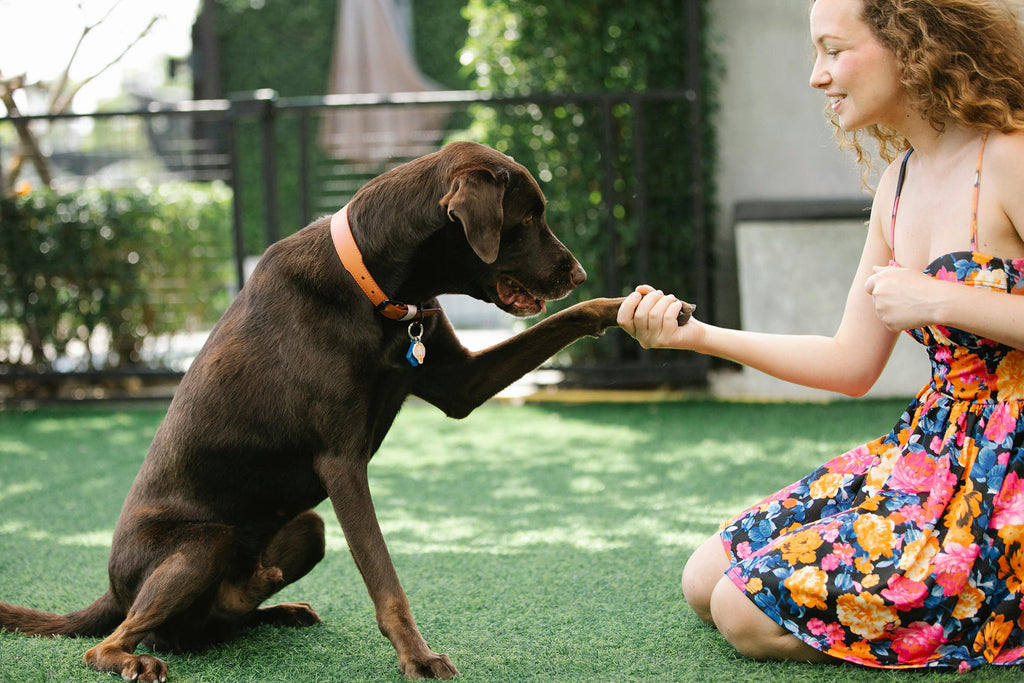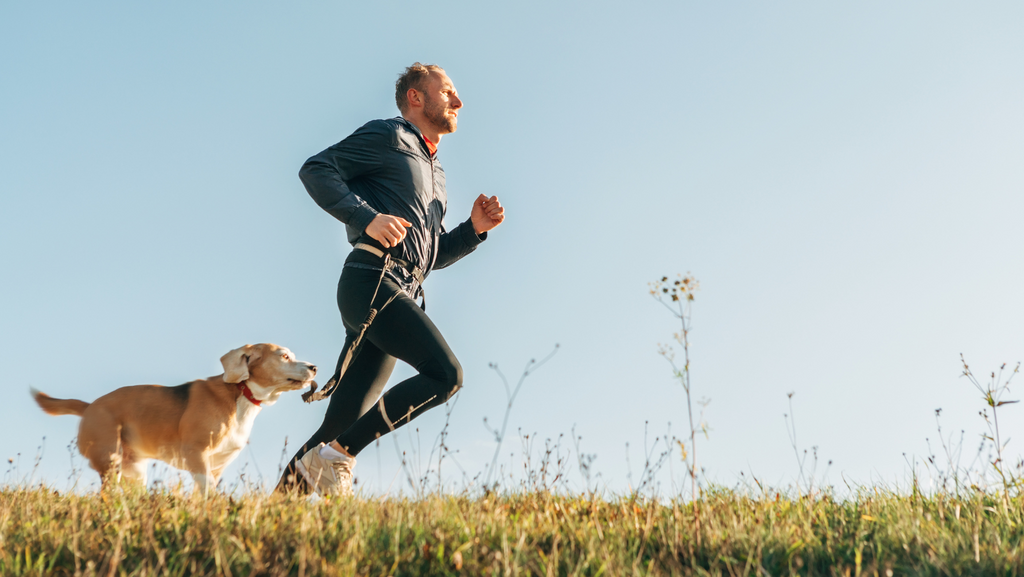Fireworks, Thunderstorm, and Noise Anxiety in Dogs

As almost half of dogs display significant fear of loud, sudden sounds like fireworks and thunder, noise phobia (or noise anxiety) is one of the most common behavioural issues pet parents face. There have been many cases of pets running off or going missing because they were scared away by loud noises. So, it is very important to be prepared, especially around the end of the year, when the weather tends to be stormy and year-end celebrations heighten the risk of exposure to unpredictable sounds.
While thunderstorms often provide warning signs, fireworks are sudden and repeated, often causing extreme stress. Fortunately, modern behaviour modification techniques and physical aids offer several proven ways to help your dog cope, minimise fear, and even overcome their phobia in the long term.
Why Do Dogs Get Anxious During Storms?
A dog’s sophisticated sensory system processes the world differently from ours, making them far more susceptible to noise phobia. Understanding the root causes allows for more targeted intervention.
Some other things that might cause this behaviour are:
1. Enhanced Auditory Sensitivity
Dogs can hear sounds at much higher frequencies from four times the distance that of humans. Thunder and fireworks, which are loud to us, can be physically painful or overwhelming for dogs, thus triggering their fight-or-flight response.
2. Atmospheric & Environmental Cues
Beyond sound, dogs are sensitive to changes that precede a storm:
- Barometric Pressure: A drop in pressure, common before a storm, can signal danger to dogs.
-
Static Electricity: Storms generate static charges that can cause uncomfortable or painful sensations on a dog's fur, leading them to seek grounded areas (like bathtubs or basements).
- Ozone Smell: Dogs can detect the scent of ozone produced by lightning, serving as an early warning of an impending storm.
3. Flashes of Lightning
The bright, unpredictable flashes of lightning can be visually startling for dogs, especially when followed closely by loud thunderclaps. This sudden sensory overload can be frightening and trigger their instinct to hide or seek comfort.
If you notice any of these signs, you need to prepare for your dog’s anxiety, but try not to panic or get worked up as this can make things worse.

Signs of Storm Anxiety
Your dog’s senses are better than yours, so they will probably know that a storm is on the way before you do. A dog that is experiencing fear will seek safety. Recognising the subtle and overt signs is the first step toward effective intervention:
-
Physical Indicators: Excessive panting, drooling (even when not hot), trembling, or shaking.
-
Hiding/Seeking: Trying to retreat to a designated safe space, a small dark room, or clinging closely to the owner.
-
Vocalisation: Persistent whining, howling, or distressed barking.
-
Restlessness: Pacing, an inability to settle, or actively trying to escape (destructive behaviour near doors or windows).
-
Incontinence: Loss of bladder or bowel control (a clear sign of extreme distress).
Some Dogs Are More Susceptible to Thunderstorm Fear
Some dog breeds suffer more than others from storm anxiety. It is more common in hounds, hunting and sporting breeds. Rescued or adopted dogs can also be more susceptible to noise phobia due to trauma that they experienced in the past (or the fear associated with a loud shelter).
Breeds that are more susceptible to anxiety linked to thunder or other loud sounds include:
-
Border Collies
-
Australian Shepherds
-
German Shepherds
-
Labrador Retrievers
-
Jack Russell Terriers
-
Beagles
-
Basset Hounds
-
Cocker Spaniels
Storm sensitivity varies a lot from individual to individual, so keep that in mind as you are looking for a future forever pal.
5 Immediate Management Strategies (During a Noise Event)

When a sudden storm or unexpected fireworks begin, your primary goal is to safely manage the dog's environment and emotional state.
1. Implement and Reinforce the Safe Den
Crucially, your dog must have a predetermined safe space—a den. This should be a low-traffic, small, dark area (like an open crate covered with a heavy blanket, or a walk-in closet).
-
Block Visuals: Close all curtains and blinds to shield against lightning flashes or firework lights.
-
Positive Association: Keep favourite chew toys and high-value treats (like a long-lasting frozen lick mat or a stuffed KONG) exclusively in this area, reinforcing that the den is a good place to be.
2. Mask the Sound
Loud, unexpected booms can be partially blocked by adding white or brown noise.
-
White Noise Machine or Fan: These can create a consistent, low-level sound buffer.
-
Calming Music: Specialised music composed for canine anxiety (often slow, simple orchestral pieces) can be highly effective.
-
Television/Radio: A familiar TV or radio show can provide human voices and familiar background noise.
3. Provide Calm Comfort (Debunking the Myth)
The outdated advice to "ignore" a fearful dog is actively being replaced. Calm, quiet comfort does not reinforce fear; it reinforces safety.
-
If your dog seeks you out, let them lean into you or sit quietly beside them.
-
Avoid dramatic reactions or high-pitched "Oh, poor baby!" talk, as this can elevate their perceived stress level. Instead, use a low, soothing voice and slow, deliberate touch.
4. Use Pressure Wraps and Physical Aids
Physical aids can provide a sense of security similar to swaddling a baby.
-
Anxiety Vests (e.g., ThunderShirt): These apply gentle, constant pressure (known as deep pressure touch) to the torso, which has a calming effect on the nervous system.
-
Earmuffs or Hoods: Some dogs tolerate specialised calming hoods or ear protection that muffles sound while still allowing them to hear basic commands.
5. Utilise Calming Supplements and Pheromones
For dogs with moderate to severe anxiety, supplements can take the edge off when given in advance.
-
Natural Supplements: Look for ingredients like L-Theanine, Tryptophan, Valerian Root, or Chamomile.
-
Canine Appeasing Pheromones (Adaptil): These synthetic pheromones mimic the natural scents a nursing mother dog emits, promoting calmness when diffused in the dog's safe space.
-
Vet-Prescribed Medications: For severe cases, consult your veterinarian. Fast-acting medications, often given 30-60 minutes before an anticipated event, can prevent the anxiety cycle from escalating to panic.
The Long-Term Solution: Systematic Desensitisation and Counter-Conditioning (SD/CC)

While management helps in the moment, SD/CC is the gold standard for reducing noise phobia over time. It involves changing the dog’s emotional response from fear to a positive anticipation (counter-conditioning) when they hear the sound (desensitisation).
1. Establish the Baseline
Purchase a recording of the trigger sound (thunder or fireworks). Find a treat that your dog considers extremely high-value (like cooked chicken or cheese).
2. Start Sub-Threshold
Play the sound at such a low volume that your dog notices it, but shows zero signs of anxiety. This is crucial; if they show fear, you've started too loud.
3. Pair Sound with Reward
The instant the sound plays, begin feeding your dog the high-value treats or playing the game they love. Goal: The sound predicts the reward, making the emotional association positive: Sound = Fun/Food.
4. Stop Sound and Reward Simultaneously
The second you turn the sound off, you stop the treats/play. This teaches the dog that the rewards are only available when the sound is present.
5. Gradual Increase
Over weeks or months, slowly (and I mean slowly) increase the volume. If your dog shows any signs of fear, immediately drop back to the previous successful volume level and spend more time there. Never force the issue.
Into Every Doggo’s Life, a Little Rain Must Fall, But…

It doesn’t need to adversely affect their lives. Anxiety caused by thunderstorms and loud noises affects many dogs, but with a little help from their pawrents, they can overcome or at least minimise their anxiety. Talk to your vet and try some of these strategies, and you and your furry pal can brave the worst of storms happily together.





